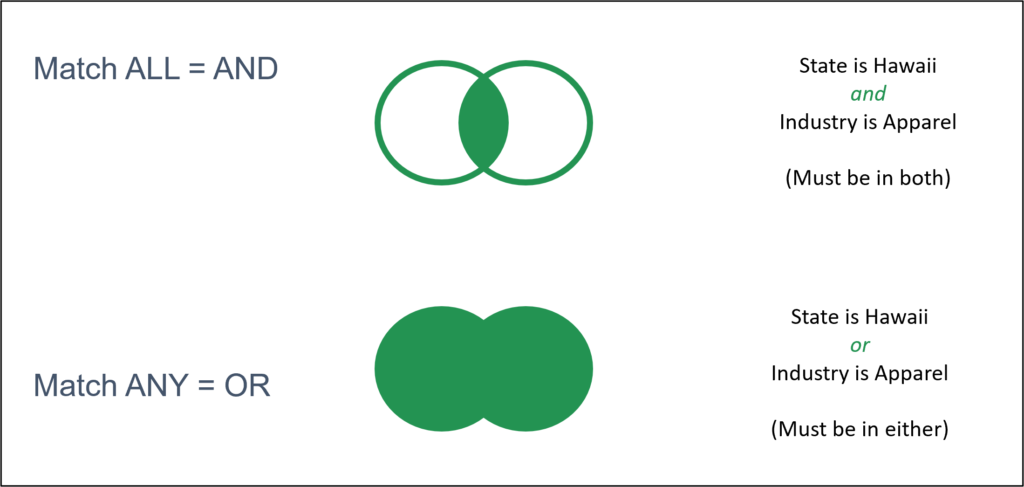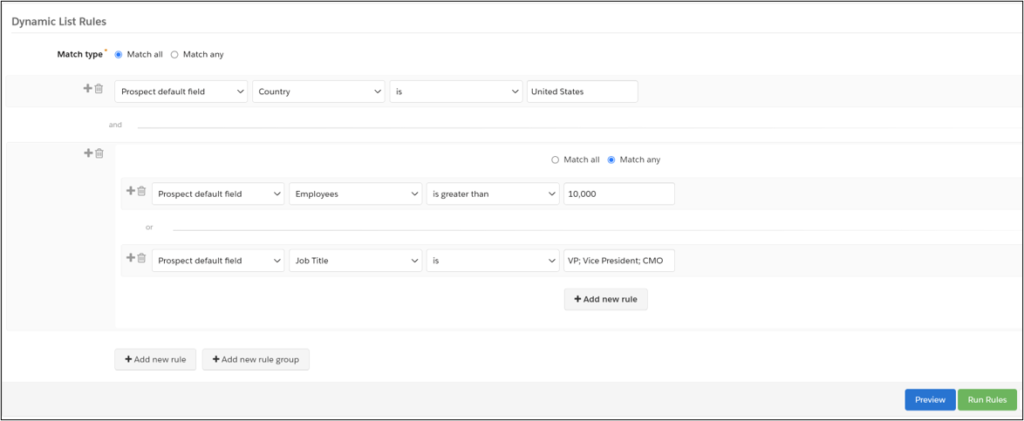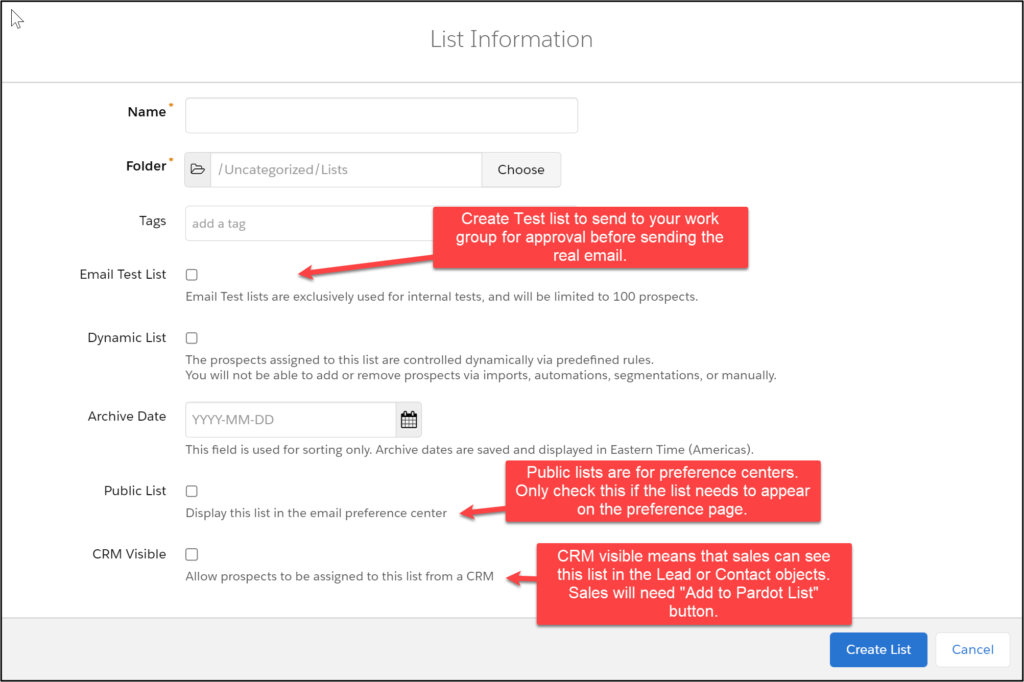Account Engagement has two kinds of lists: Segmentation and Dynamic. Both lists are used for various reasons, including sending emails, suppressing email recipients or grouping prospects in your database for automations.
Segmentation List
The most basic list is a segmentation list.
The segmentation list is like an empty bucket. It will stay empty unless you purposefully add prospects to the list. You can add prospects:
- Via import
- Manually
- With automations
To create a segmentation list, go to the Prospect tab and click on “Segmentation List .” Next, click “Add New.” Fill out the required fields (Name and folder).

Dynamic List
While a segmentation list is static (it doesn’t change unless you add prospects), a dynamic list automatically updates.
Go to the Prospect tab and click on “Segmentation List”. Click “Add New.” Fill out the required fields (Name, folder, and campaign). Then, check “Dynamic list.”

You will now see a screen that allows you to add criteria to add prospects to your dynamic list. A dynamic list constantly refreshes, adding prospects who match the criteria and removing prospects who don’t.
To add prospects from the state of Minnesota to your list, enter the following criteria:

To add prospects with job titles “V.P. or Vice President,” enter criteria like this (Note the semicolons between job titles):

Quick exercise
1. Create a segmentation list. See how the prospect count is zero. If you returned to this list a week later, the prospect count would still be zero. That’s because segmentation lists are empty unless you add prospects through importing, manually adding them or by using automations.

2. Now create a dynamic list. Choose simple criteria (Prospect default field Last Name is “Kazin”). Because dynamic lists are constantly refreshing, if you add a prospect named “Kazin” tomorrow, you will see it automatically added to your dynamic list.

Match All and Match Any
You may have noticed radio dials for Match All or Match Any. You will need to consider these choices as your criteria get more sophisticated.
Match All means that prospects must meet both criteria (smaller segment). Match Any means that prospects will pul into the dynamic list if either criteria is met (larger segment).

Rule Groups
You can create complex rules with dynamic lists by adding a rule group. Rule groups allow you to construct combinations of criteria while reducing the restriction of “match all” and “match any” requirements.
The flexibility of rule groups allows users to combine multipart rules that would have previously been two separate rules.
Here the marketer is looking for prospects in the United States AND from either big companies (employees greater than 10k) or vice president job titles.

Practice
Create the following dynamic lists:
- For all prospects with the first name “John.”
- For all prospects with the first name “John” or “Jon.”
- For all prospects with the first name “John” or “Jon” and who live in the state of Minnesota.
- For all prospects in the department “Human Resources” and who either have the job title “Director” or who live in the states of California and New York.
- Create a suppression list of all your competitors.
- Create a dynamic list to find unengaged prospects. (Use fields “Prospect has been emailed” and “Prospect time”). For more examples to clean your Account Engagement database, read Dynamic Lists to Clean Up Your Database.
Archive a List
Archive lists to clean up the number of lists displayed in your Lists table. When a list is archived, you can’t add prospects or use it for list emails. Automations continue to work as expected.

Other Lists
Understand the purpose of other Account Engagement list choices.


